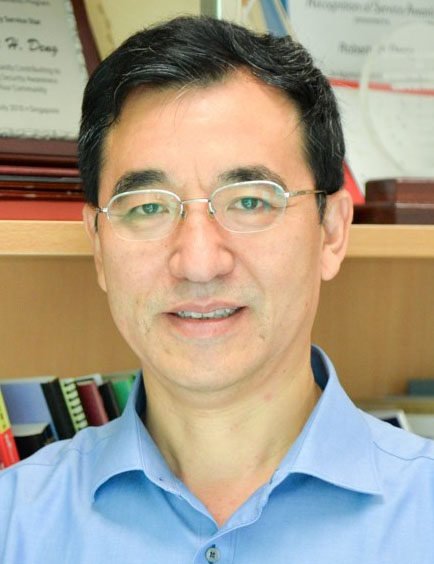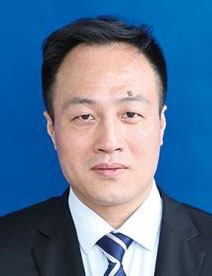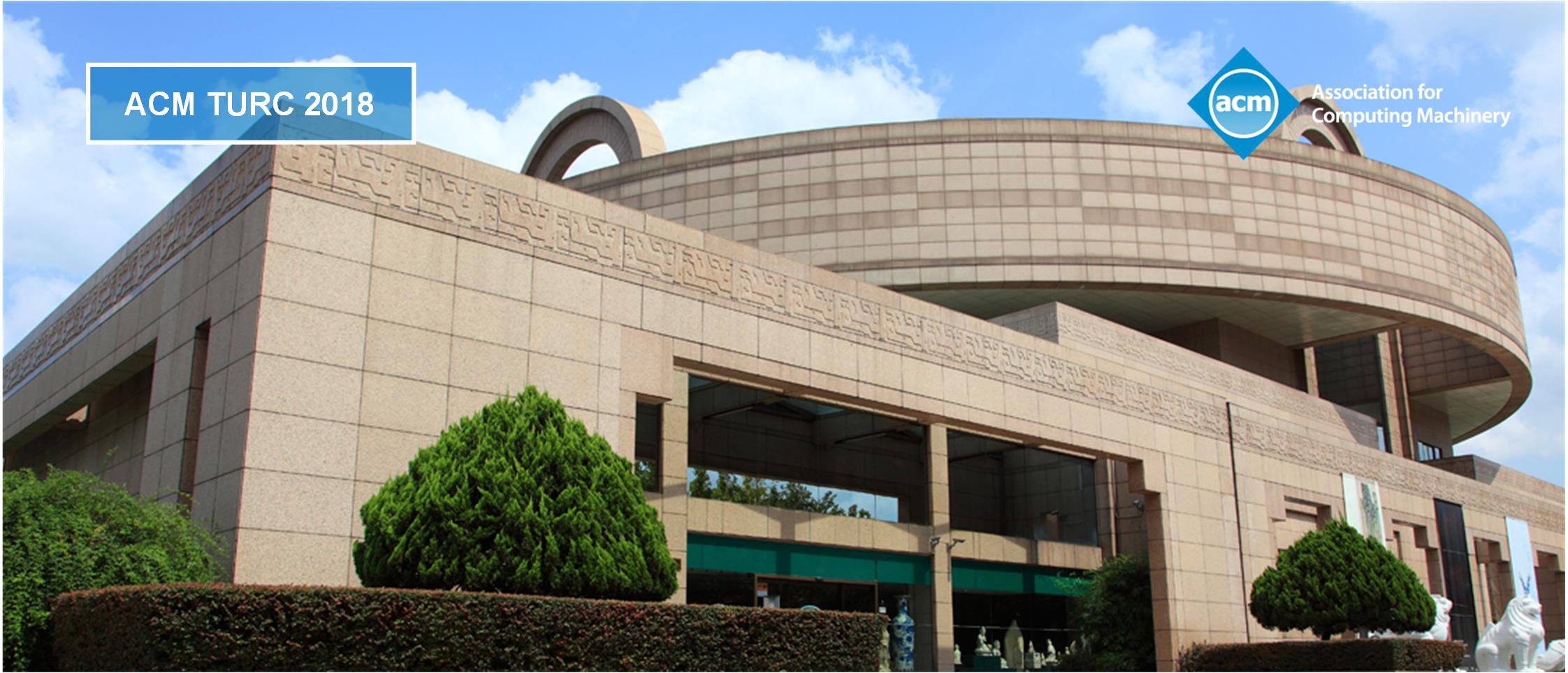The ACM TURC 2018 will be held from May 19-20,2018 at Shanghai, China. The conference serves as a highly selective and premier international forum on computer science research. The theme of this conference is “To Lead Artificial Intelligence, To Create Infinite Possibilities”. We will hold a wide variety of activities of academic exchanges such as invited talks and theme forums. Domestic and international academic experts and professors including some ACM Turing Award winners will share their perspectives on cutting-edge technologies and explore the current trends in Artificial Intelligence.
ACM SIGSAC CHINA symposium aims to provide a world’s premier forum of renowned researchers to share their insightful opinions and discuss cutting-edge research on the Security, Audit and Control (SAC). The symposium will feature in types of sessions including distinguished talks and panel discussion. This summit forum expects to promote the whole chain development of SAC from the academic, technical to industry and applications.
SIGSAC CHINA Symposium
Program
2018-05-19: SIGSAC
Time |
Program |
Speaker |
Title |
14:00-14:05 |
Opening |
Kui Ren |
|
14:05-14:55 |
Keynote |
Yan Chen |
Towards Real-Time and Accurate Endpoint Detection and Response(EDR) for Advanced Threats |
14:55-15:20 |
Tea Break |
||
15:20-16:10 |
Keynote |
Hongwei Luo |
Application of Biometric Authentication in Internet Finance |
2018-05-20: SIGSAC
Time |
Program |
Speaker |
Title |
14:00-14:50 |
Keynote |
Elaine Shi |
Thunder Token: A Fast and High Throughput Blockchain |
14:50-15:10 |
Tea Break |
||
15:10-16:00 |
Keynote |
Robert Deng |
Present and Future Challenges in IoT Security |
16:00-16:50 |
Keynote |
杨育斌 |
AI 驱动智慧安全 |
Organizers
General Chair
Kui Ren (Zhejiang University, China)
TPC Chair
Wenyuan Xu (Zhejiang University, China)
Jinsong Han (Xi’an Jiao Tong University, China)
Sponsorship Committee Chair
Hui Li (Xidian University, China)
Keynote: Towards Real-Time and Accurate Endpoint Detection and Response (EDR) for Advanced Threats
 Yan Chen Zhejiang University, China / Northwestern University, USA |
Abstract: The attacks have gradually evolved to sophisticated targeted attacks represented by the Advanced Persistent Threats (APTs). However, existing detection systems are insufficient to detect APT attacks. Static signature based detections can be easily evaded by code polymorphism and encryption. Similarly, networking-based detection such as firewalls has very limited visibility with evasion techniques such as encryption. Sandbox based detections can provide fine-grained dynamic activities of the program, such as taint-flow analysis. While such activities can provide accurate malware detection, these systems incur very significant performance overhead which prohibits them from on-client deployment or real-time detection, and they can often be easily recognized and bypassed with anti-sandbox techniques.
|
Keynote: Application of Biometric Authentication in Internet Finance
 Hongwei Luo Ant Financial Services Group |
Abstract: With the fast development of Internet Finance, the requirement of identity authentication is increasingly dramatically. As a basis of Internet Finance, it is essential to satisfy the strict regulatory requirements for real name, even real person. Traditional identity authentication such as password, token cannot meet the demands of fast-growing Internet fiancé due to their disadvantages, i.e., easy to forget, inclined to be attacked and hard to bring. Therefore, biometric authentication has become the inevitable trend for identity authentication in Internet finance. In this talk, we first identify the requirements of biometric authentication in different Internet finance scenarios. Second, we illustrate the typical biometric authentication modes including local biometric verification mode and remote biometric verification mode. Third, we analyze the key technologies used in biometric authentication like liveness detection. Finally, we introduce Internet finance authentication alliance (IFAA), namely, a booming industry alliance for biometric authentication. |
Keynote: Thunder Token: A Fast and High Throughput Blockchain
 Elaine Shi Cornell University |
Abstract:
In this talk, I will describe the core consensus protocol behind Thunder Token. Thunder is a fast and high throughput blockchain that supports EVM smart contracts. Right now, major blockchains like Bitcoin and Ethereum have all reached throughput bottleneck which drives up transaction fees. Since Cryptokitties, Ethereum transaction fees have been as high as millions of USD per day. Thunder Tokens will allow the existing DApp demand (most of which use EVM) to readily migrate with little to no modification. Thunder Token is enabled by a new paradigm in large-scale consensus. Our consensus protocol combines 1) a slow chain, which can be any standard blockchain such as Ethereum or a proof-of-stake blockchain, and 2) a fast path where a committee of stakeholders and a special party called an accelerator perform voting. Almost all the time, transactions are confirmed on the fast path instantly without waiting for the slowchain to grow. When the fast path fails, there is a provably secure mechanism to fall back to the slowchain and from there one can bootstrap the fast path. The accelerator’s only job is to speed up transaction confirmation, and even a malicious accelerator cannot harm security or decentralization. Joint work with Rafael Pass.
|
Keynote: Present and Future Challenges in IoT Security
 Robert Deng Singapore Management University |
Abstract: The Internet of things (IoT) is the network of every objects embedded with electronics, software, sensors, actuators, and connectivity which enables these objects to send and receive data. It is estimated that there will be 25 to 200 billion connected devices by 2020 and IoT could contribute US$11 trillion in global economy by 2025. This growth of network-connected devices and services will create immense opportunities and benefits for our society we cannot even predict today. A smart home enables its residents to adjust room temperature before they get home and a smart washing machine automatically orders detergent before it runs out. Sensors on a car can notify drivers of dangerous road conditions and networked cars will notify first responders when an accident happens. |
Keynote: AI drives Intelligent Security
 杨育斌 BLUEDON (蓝盾股份) |
Abstract:
Pointed by PWC, “Cyberattacks will be more powerful because of AI—but so will cyber defense.” AI -- as a wider definition which includes machine learning and deep learning -- is empowering cyber defense. Already, scalable machine learning techniques combined with cloud technology are analyzing enormous amount of data and powering real-time threat detection and analysis. AI capabilities can also quickly identify “hot spots” where cyberattacks are surging and provide cybersecurity intelligence reports. Many companies in security industry have tried to move from a purely “signature-based” system to a machine learning system that tries to interpret actions and events and learns from a variety of sources what is safe and what is not. We mostly see the obvious use cases of applying AI in cyber security are on the endpoint, in the network, fraud or at the SIEM, for example, MIT’s Computer Science and Artificial Intelligence Lab (CSAIL) developed a system called AI2, an adaptive machine learning security platform that helped to filter data and pass it onto the human analysts to reduce alerts down.
|





